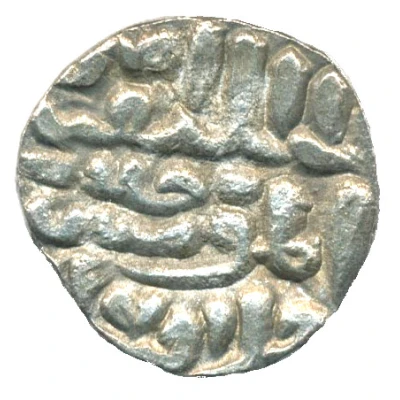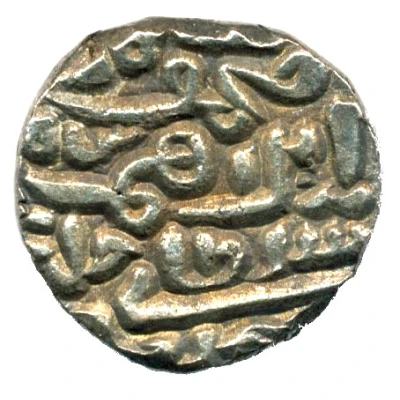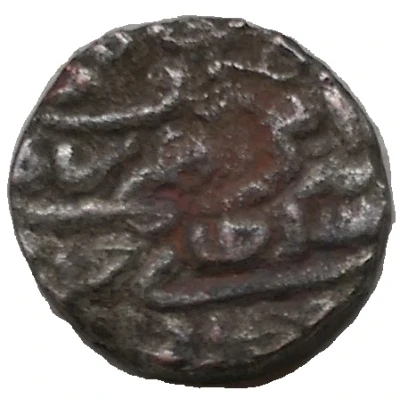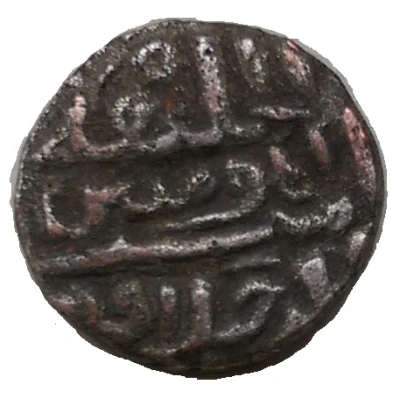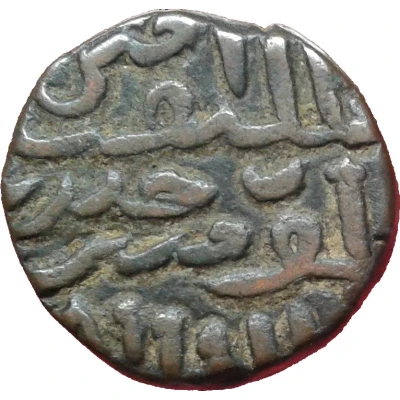
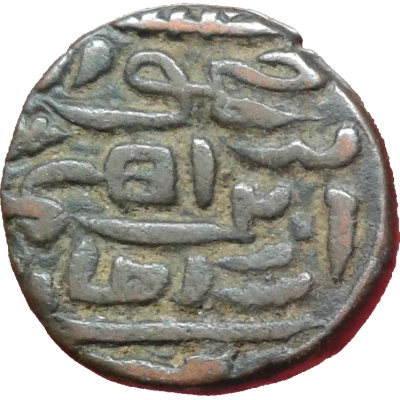

© Monéphil (CC BY-NC)
1 Tanka - Hussain Shah Jaunpur
| Billon | 10.03 g | 20 mm |
| Issuer | Sultanate of Jaunpur (Indian Sultanates) |
|---|---|
| Type | Standard circulation coin |
| Years | 861-916 (1457-1510) |
| Calendar | Islamic (Hijri) |
| Value | 1 Tanka |
| Currency | Tanka (1394-1479) |
| Composition | Billon |
| Weight | 10.03 g |
| Diameter | 20 mm |
| Thickness | 4.25 mm |
| Shape | Round (irregular) |
| Technique | Hammered |
| Orientation | Coin alignment ↑↓ |
| Demonetized | Yes |
| Updated | 2024-10-05 |
| Numista | N#38508 |
|---|---|
| Rarity index | 40% |
Reverse
Inscription
Translation: husain shah bin mahmud shah bin ibrahim shah sultan khulidat mamlakatahu
Edge
Plain
Comment
Jaunpur Sultanate1 Tanka 911 (Billon)
weight: 9,7-10,3grams
GG# J27
Husain Shah AH863-884 / AD1458-1479
Hammered coin
RULER: HUSSAIN SHAH : (AH 863-884 / AD 1458-1479)
The Jaunpur sultanate was an independent kingdom of northern India between 1394 to 1479, whose rulers ruled from Jaunpur or Jounpoor in the present day state of Uttar Pradesh. The Jaunpur sultanate was ruled by the Sharqi dynasty. The Khwajah-i-Jahan Malik Sarwar, the first ruler of the dynasty was a wazir (minister) under Sultan Nasiruddin Muhammad Shah IV Tughluq (1390–1394). In 1394, he established himself as an independent ruler of Jaunpur and extended his authority over Awadh and a large part of Ganges-Yamuna doab. The dynasty founded by him was named so because of his title Malik-us-Sharq (the ruler of the east). The most acclaimed ruler of this dynasty was Ibrahim Shah. The last ruler Hussain Shah was overthrown by Bahlul Lodi, and Jaunpur sultanate was permanently annexed to Delhi sultanate by Sikandar Lodi.In 1389, Malik Sarwar received the title of Khajah-i-Jahan. In 1394, he was appointed as the governor of Jaunpur and received his title of Malik-us-Sharq from Sultan Nasiruddin Mahmud Shah II Tughluq (1394 - 1413). Soon, he established himself as an independent ruler and took the title of Atabak-i-Azam. He suppressed the rebellions in Etawah, Koil and Kanauj. He was also able to bring under his control Kara, Awadh, Sandila, Dalmau, Bahraich, Bihar and Tirhut. The Rai of Jajnagar and the ruler of Lakhnauti acknowledged his authority and sent him a number of elephants. After his death, he was succeeded by his adopted son Malik Qaranfal, who took the title of Mubarak Shah.
The last ruler Hussain Shah signed a four years' peace treaty with Bahlul Lodi in 1458. Later, in order to invade Delhi reached the banks of the Yamuna with a very large army in 1478. Sultan Bahlul Lodi tried to secure peace by offering to retain only Delhi and govern it as a vassal of Hussain Shah but he rejected the offer. As a result, Sultan Bahlul crossed the Yamuna and defeated him. Hussain Shah agreed for truce but again captured Etawah and marched towards Delhi with a huge army and he was again defeated by Bahlul Lodi. He was able to make peace this time also. In March, 1479 he again arrived at the banks of Yamuna. He was again defeated by Bahlul Lodi and lost the Parganas of Kampil, Patiali, Shamsabad, Suket, Koil, Marhara and Jalesar to the advancing army of the Delhi Sultan. After the successive defeats in the battles of Senha, Rapri and Raigaon Khaga, he was finally defeated on the banks of the Rahab. He fled to Bengal, where he was granted asylum by sultan Alauddin Husain Shah and passed his last days there. In 1486, Bahlul Lodi placed his eldest surviving son Barbak Shah Lodi on the throne of Jaunpur.
Interesting fact
One interesting fact about this coin is that it was issued during the reign of Hussain Shah, who was the last ruler of the Jaunpur Sultanate. Despite being the last ruler, he was known for his military campaigns and administrative reforms, which helped to strengthen the Sultanate before it was eventually absorbed into the Mughal Empire.
